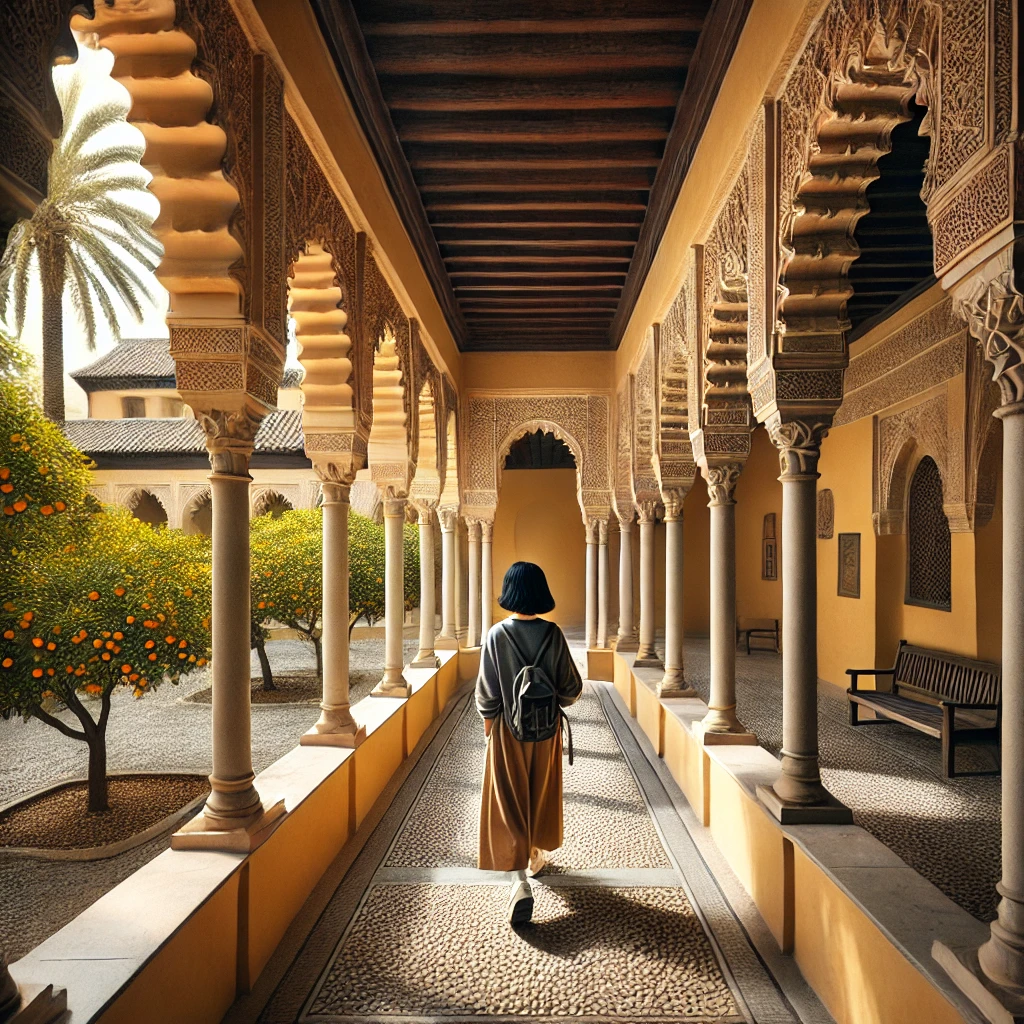ChatGPT:
Córdoba, Spain, is one of the most historically significant cities in Europe, renowned for its cultural and architectural heritage. Its origins date back to pre-Roman times, and it has evolved through numerous civilizations, each leaving a profound impact on its identity. Here’s a detailed overview of Córdoba’s origin, history, and development:
Origins and Early History
1. Pre-Roman Era:
The region around Córdoba was originally inhabited by the Tartessians, an ancient Iberian civilization known for its trade and metallurgy. Archaeological evidence suggests it was already an important settlement before Roman rule.
2. Roman Córdoba (2nd Century BCE – 5th Century CE):
Córdoba was founded as Corduba by the Roman general Marcus Claudius Marcellus in 152 BCE. It became the capital of Hispania Ulterior and later of Hispania Baetica, a significant Roman province.
• The city flourished as a center of trade, politics, and culture.
• Notable Roman structures, such as the Roman Bridge and aqueducts, were built during this period.
• Córdoba became a hub of intellectual life, producing notable figures like the philosopher Seneca the Younger.
Islamic Period (8th – 13th Century)
1. Umayyad Conquest:
In 711 CE, the Moors (Muslim forces) captured Córdoba during their conquest of the Iberian Peninsula. By 756 CE, it became the capital of the Umayyad Emirate of al-Andalus, marking the beginning of its golden age.
2. Caliphate of Córdoba (929 – 1031):
Under Abd al-Rahman III, Córdoba was declared a caliphate, making it one of the most powerful and sophisticated cities in Europe and the Islamic world.
• The city reached its peak, with a population of over 500,000, making it the largest city in Europe at the time.
• It became a center of science, philosophy, medicine, and the arts, attracting scholars from across the Mediterranean and the Middle East.
• The construction of the Mezquita (Great Mosque) symbolized Córdoba’s cultural and religious prominence.
3. Decline of the Caliphate:
Internal conflicts led to the fragmentation of the caliphate in the early 11th century. Córdoba lost its political dominance but remained culturally significant.
Medieval and Christian Córdoba (13th – 15th Century)
1. Christian Reconquest (1236):
Ferdinand III of Castile reconquered Córdoba in 1236 during the Christian Reconquista. The city became part of the Kingdom of Castile.
• The Mezquita was converted into a cathedral, preserving its architectural grandeur while adding Christian elements.
• The Alcázar of the Christian Monarchs was established as a royal palace.
2. Jewish Community:
Córdoba’s Jewish quarter flourished during this period. Scholars like Maimonides, a Jewish philosopher and physician, were influential figures. However, anti-Jewish sentiment and eventual expulsion under Ferdinand and Isabella marked the end of this period of relative tolerance.
Renaissance and Modern Period (16th – 19th Century)
1. Economic Decline:
The city’s significance dwindled after the Reconquista as Spain’s focus shifted to other cities like Seville and Madrid.
2. Preservation of Heritage:
Despite its reduced political importance, Córdoba retained its architectural and cultural treasures, preserving its unique blend of Roman, Islamic, and Christian influences.
20th Century to Present
1. Rediscovery and Revival:
In the 20th century, Córdoba gained recognition for its historical and cultural legacy.
• The historic center, including the Mezquita, was designated a UNESCO World Heritage Site in 1984.
• The city’s Patios Festival, celebrating its beautiful flower-filled courtyards, became an annual highlight.
2. Modern Córdoba:
Today, Córdoba is a medium-sized city blending its rich history with modern development. It is a popular destination for tourists seeking to explore its layered past and vibrant Andalusian culture.
Córdoba’s Legacy
Córdoba’s history reflects a unique synthesis of diverse civilizations: the technological advancements of the Romans, the intellectual and artistic achievements of the Islamic Caliphate, and the resilience of its Christian and Jewish communities. This intricate tapestry makes Córdoba a symbol of cultural fusion and historical continuity.
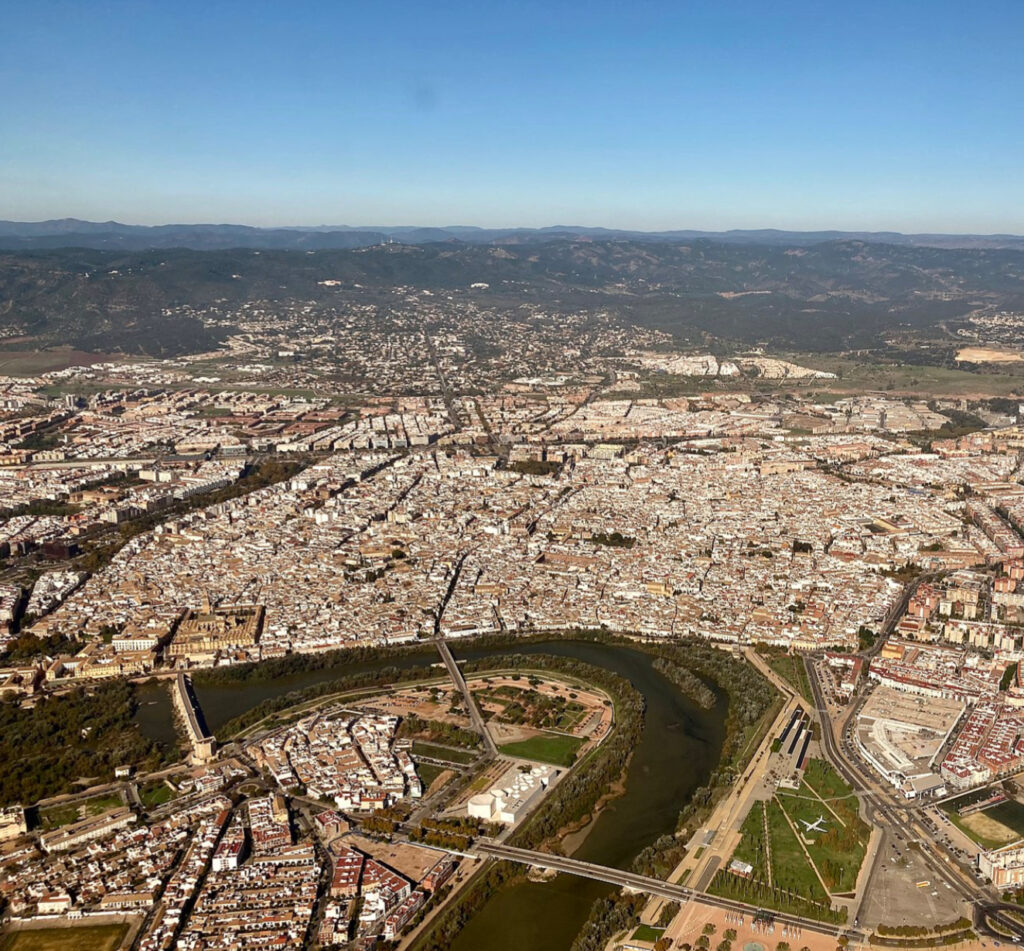
The Mezquita-Catedral of Córdoba is one of the most iconic monuments in Spain and a masterpiece of architectural evolution. Its history and architecture reflect the cultural, religious, and artistic influences of the civilizations that shaped Córdoba over centuries.
Historical Significance
1. Origins as a Visigothic Church (6th Century):
Before the construction of the Mezquita, the site housed the Christian Basilica of San Vicente, a Visigothic church. Following the Islamic conquest of Córdoba in 711, the church was divided for use by both Christians and Muslims. Eventually, the Muslims purchased the site and demolished the basilica to make way for the mosque.
2. Construction of the Great Mosque (784-987):
• In 784, Abd al-Rahman I, the first Emir of Córdoba, began constructing the mosque. It symbolized the rising power of the Umayyad dynasty in al-Andalus.
• Successive rulers, including Abd al-Rahman II, Al-Hakam II, and Al-Mansur, expanded the mosque, adding more arches, columns, and decorative elements.
• By the late 10th century, the Mezquita was one of the largest and most magnificent mosques in the Islamic world, rivaling those in Damascus and Baghdad.
3. Christian Reconquista and Transformation (1236):
After the Christian reconquest of Córdoba by King Ferdinand III of Castile in 1236, the mosque was consecrated as a cathedral. Over the centuries, Christian rulers made modifications, culminating in the construction of a Renaissance-style nave and choir in the 16th century.
4. Modern Recognition:
• The Mezquita-Catedral was declared a UNESCO World Heritage Site in 1984.
• Today, it stands as a testament to Córdoba’s layered history and cultural fusion.
Architectural Significance
The Mezquita-Catedral’s architecture is a stunning blend of Islamic and Christian styles, showcasing the evolution of artistic and architectural traditions over time.
Islamic Features:
1. Hypostyle Hall:
• The mosque’s original prayer hall is a forest of 856 columns made of marble, jasper, and granite, many repurposed from Roman and Visigothic buildings.
• The iconic horseshoe arches with alternating red and white voussoirs create a visually striking effect and enhance the sense of space.
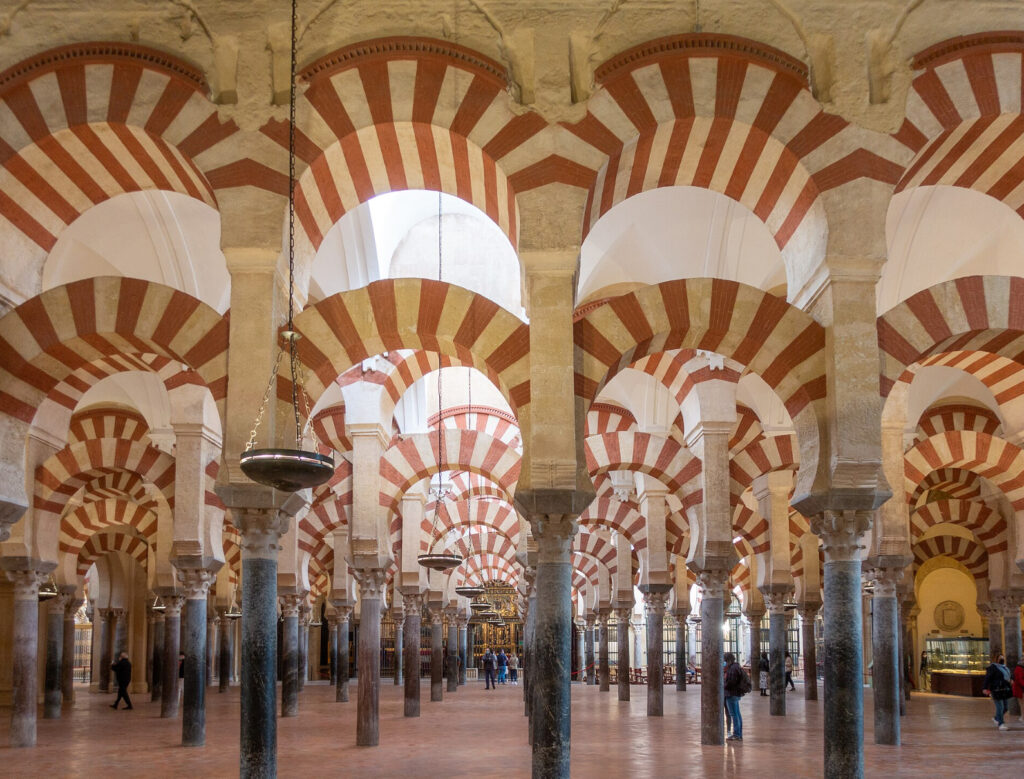
2. Mihrab:
• The mosque’s mihrab (prayer niche) is a masterpiece of Islamic art, featuring intricate geometric and floral designs, Arabic calligraphy, and mosaics imported from Byzantium.
• Its octagonal dome, supported by interlacing arches, exemplifies advanced engineering and artistry.
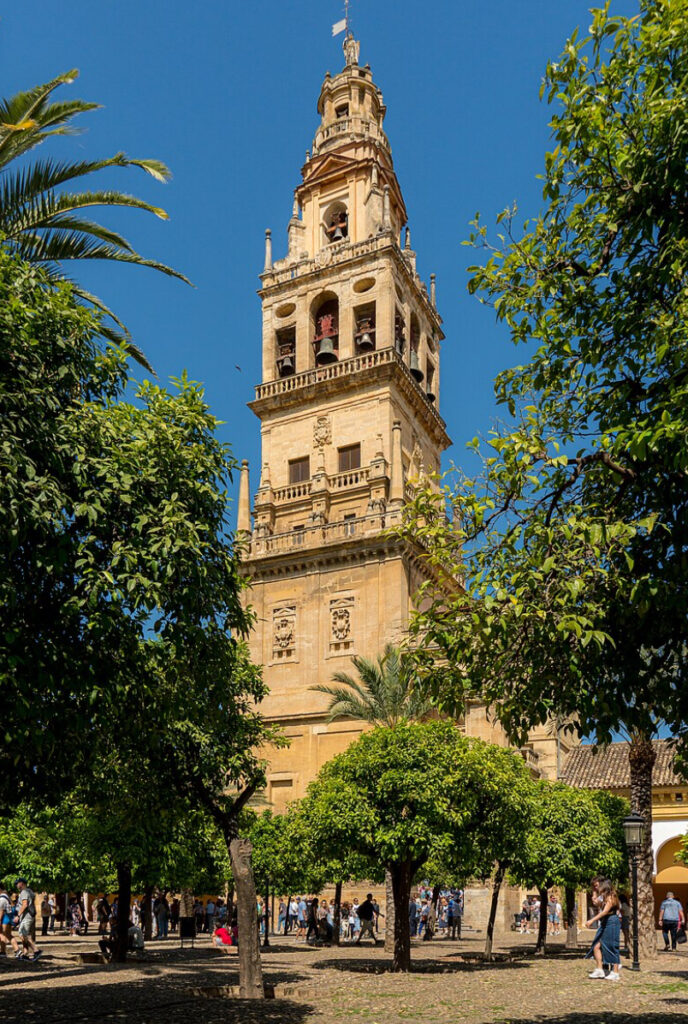
3. Courtyard (Patio de los Naranjos):
• The mosque’s original courtyard, used for ablutions, remains intact, planted with orange trees and featuring a historic water system.
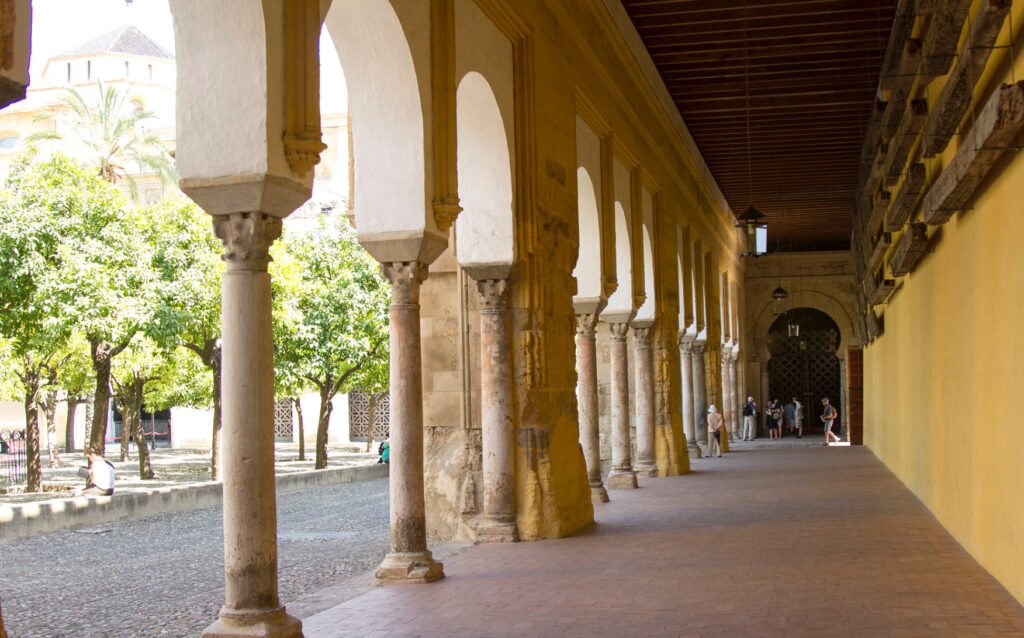
4. Maqsura:
• A space reserved for the caliph, the maqsura features exquisite latticework and decorative screens.
Christian Features:
1. Renaissance Nave and Choir (16th Century):
• In 1523, Charles V approved the construction of a Christian nave and choir in the heart of the mosque.
• The Baroque choir stalls, crafted from mahogany, and the soaring vaulted ceiling stand in stark contrast to the low arches of the mosque.
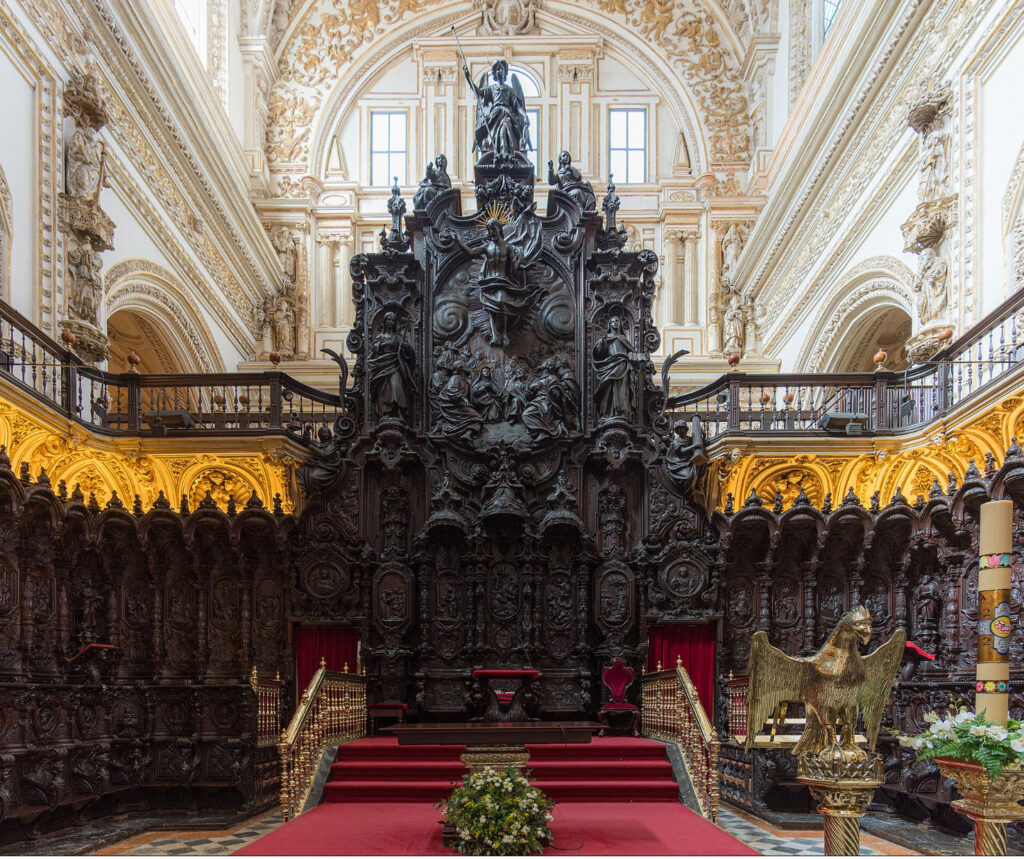
2. Bell Tower (Torre del Alminar):
• Originally a minaret built during the mosque’s Islamic period, the tower was converted into a bell tower after the Reconquista. It offers panoramic views of the city.
Cultural and Symbolic Legacy
The Mezquita-Catedral embodies the coexistence and tension between cultures over centuries:
• It serves as a physical manifestation of Córdoba’s historical role as a crossroads of civilizations.
• The transformation of the mosque into a cathedral symbolizes the shifting religious and political landscape of medieval Spain.
• The structure’s preservation highlights a commitment to celebrating shared cultural heritage, despite its complex and sometimes contentious history.
Today, the Mezquita-Catedral is a globally recognized symbol of cultural and architectural brilliance, drawing visitors who marvel at its unique blend of artistry, engineering, and historical depth.
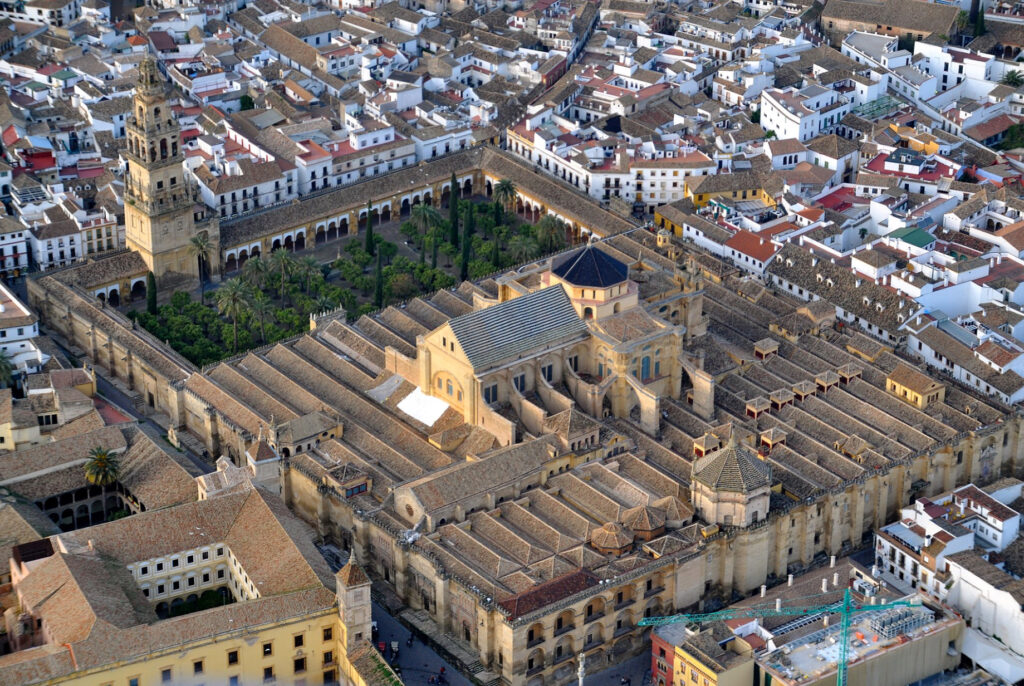
Here is a list of major historical monuments and tourist attractions in Córdoba, Spain, along with their approximate dates and significance:
1. Mezquita-Catedral (Mosque-Cathedral of Córdoba)
• Date: 784–987 (construction and expansion), transformed into a cathedral in 1236.
• Significance: A UNESCO World Heritage Site, this iconic structure blends Islamic and Christian architecture, featuring the famed hypostyle hall with red-and-white arches, a stunning mihrab, and a Renaissance cathedral nave.
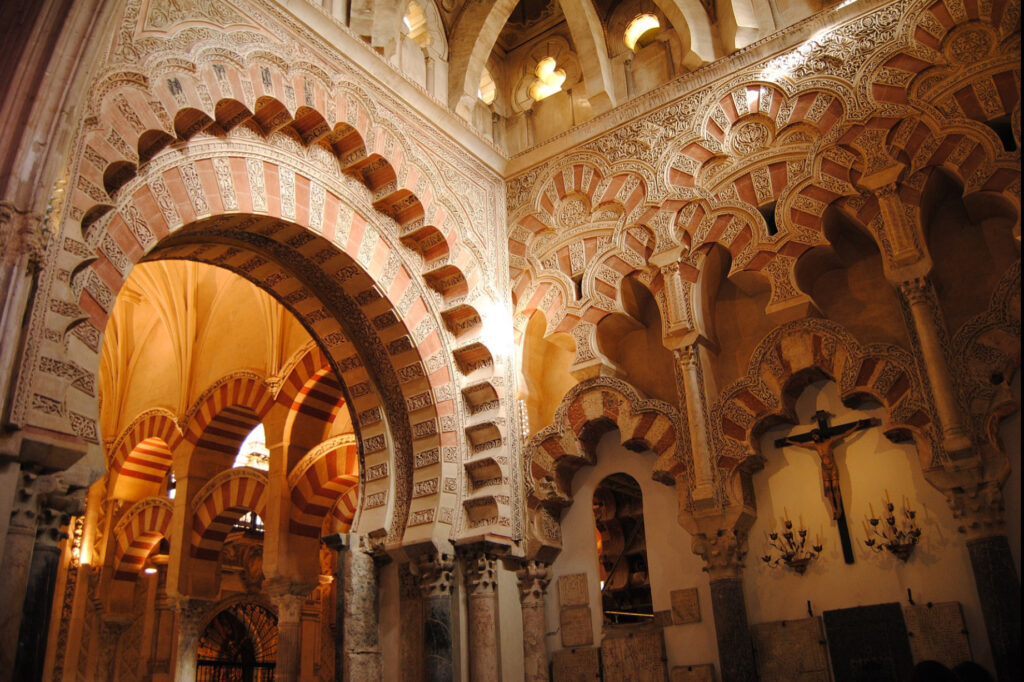
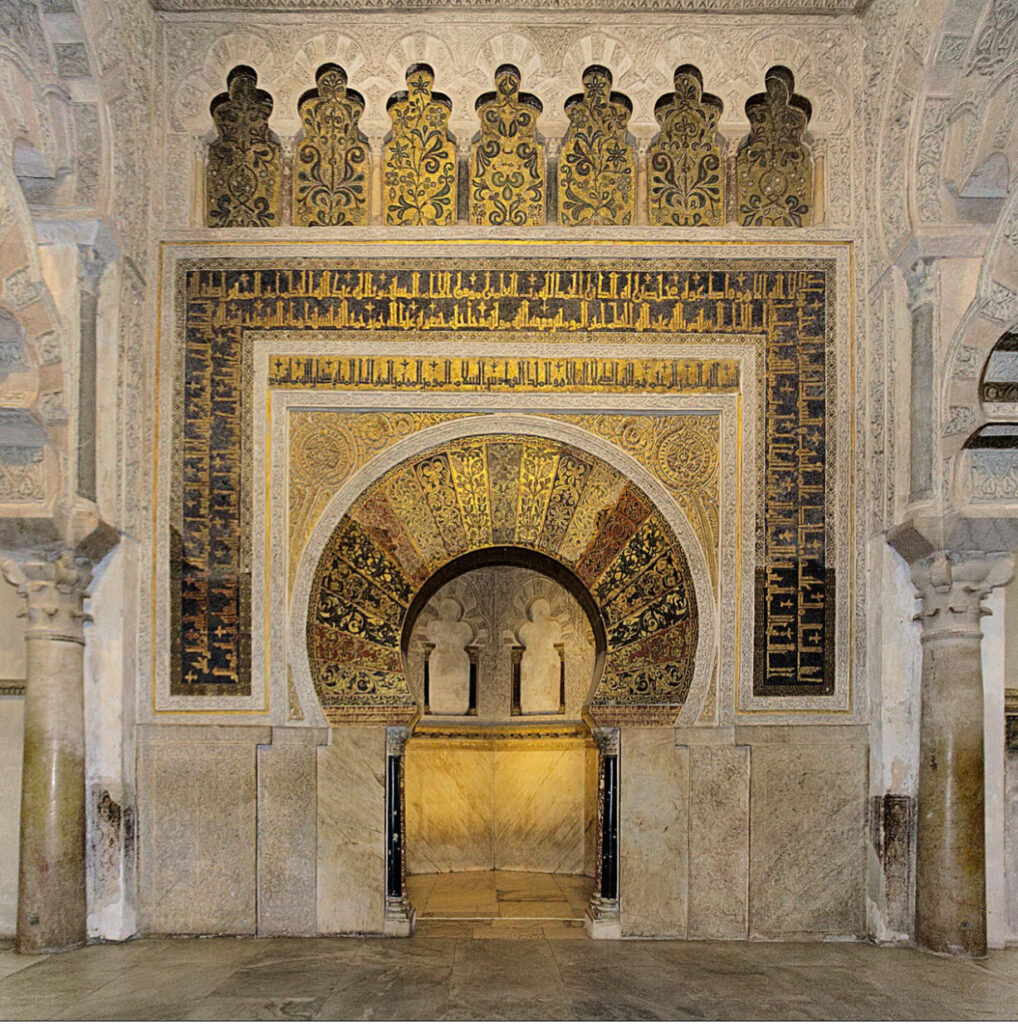
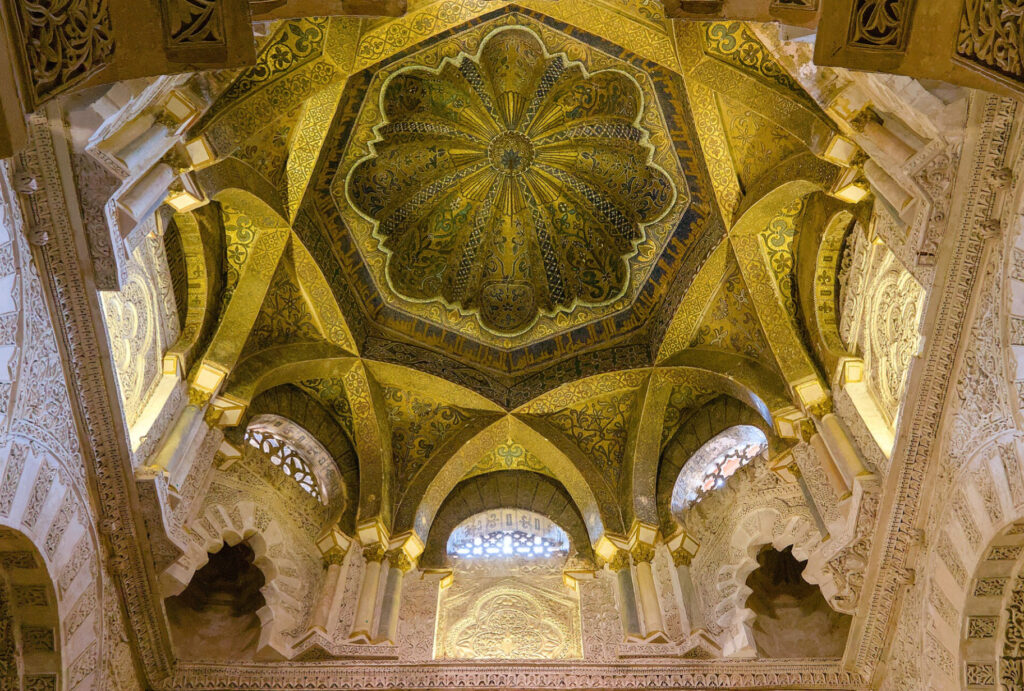
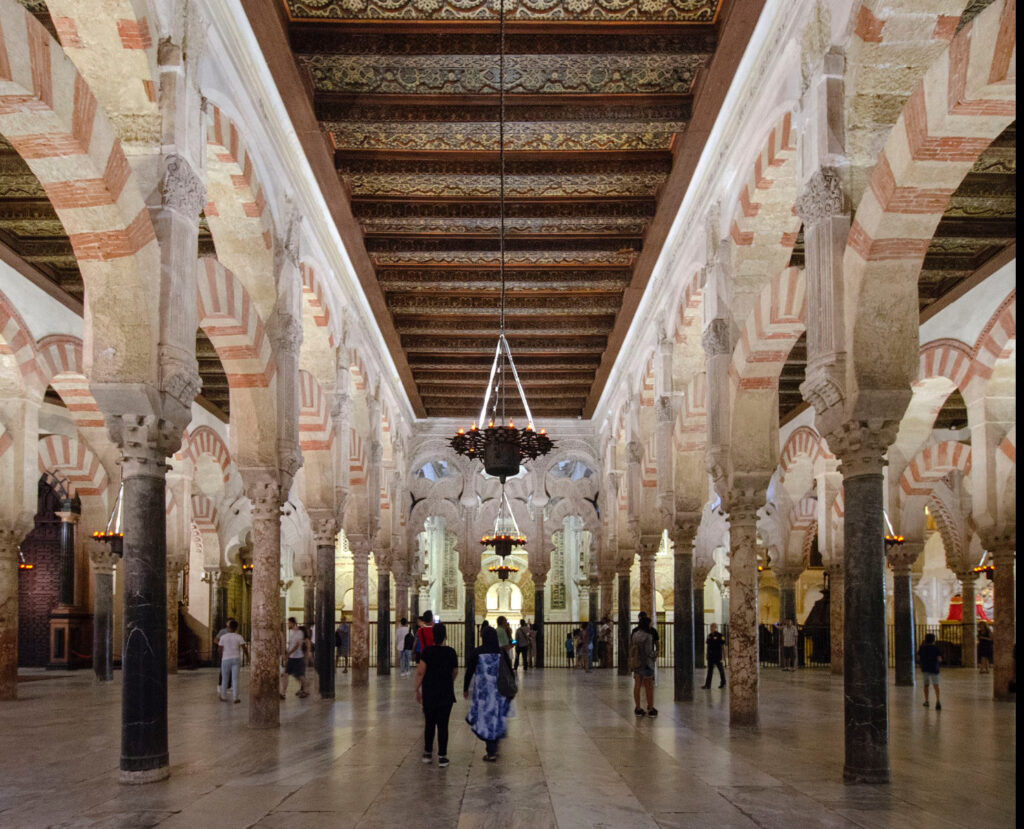
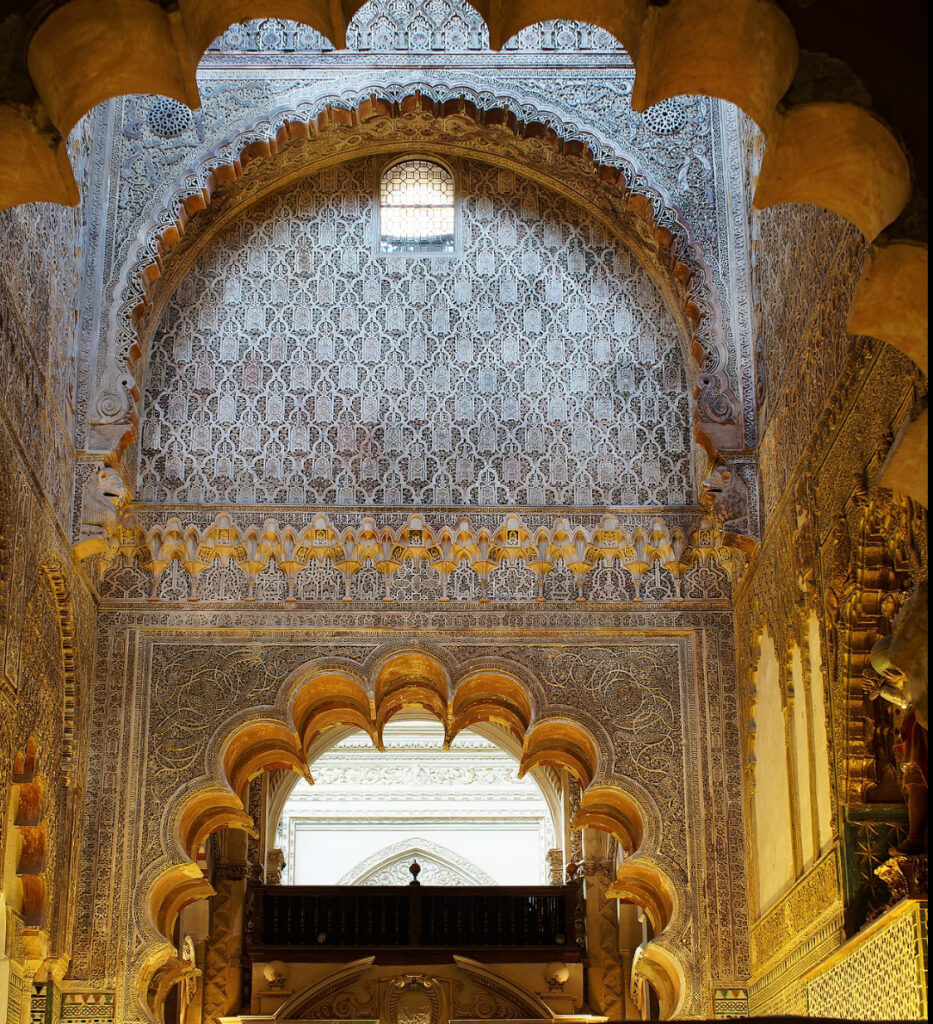
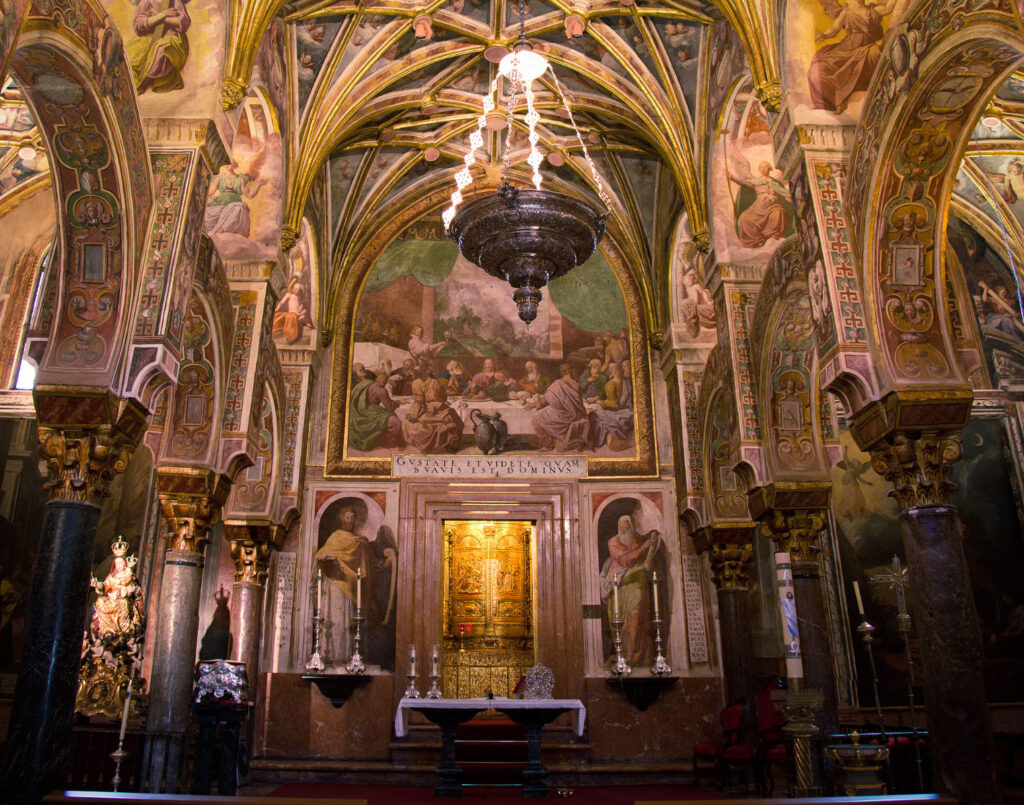
2. Roman Bridge (Puente Romano)
• Date: 1st century BCE (Roman period).
• Significance: Spanning the Guadalquivir River, this bridge was part of the Via Augusta. It has been restored multiple times and is a scenic spot for walking and photography.
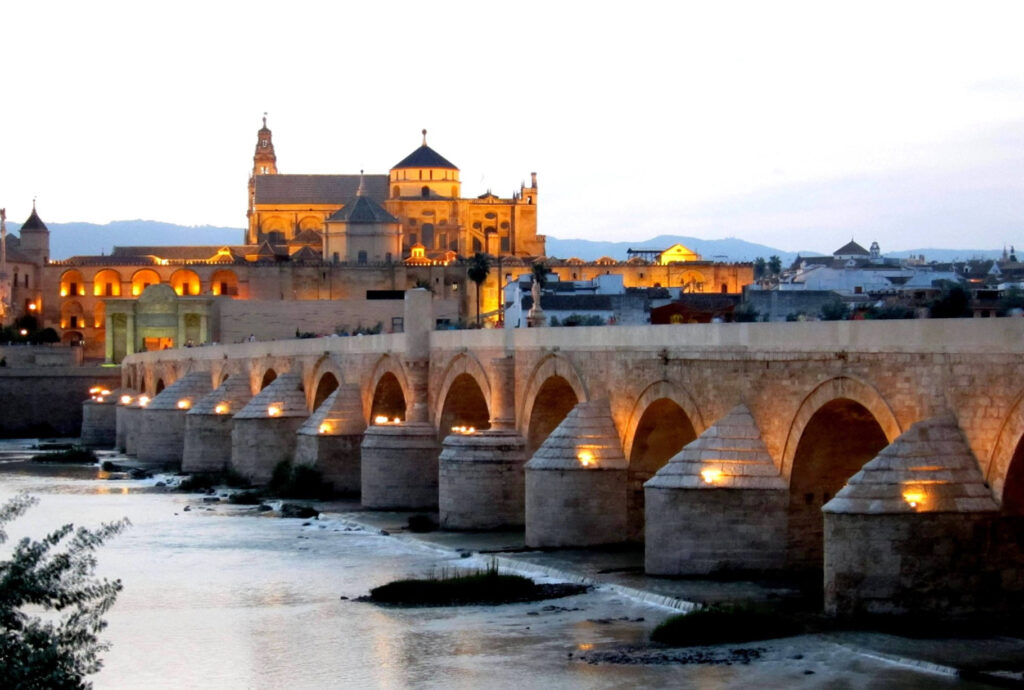
3. Alcázar de los Reyes Cristianos (Alcázar of the Christian Monarchs)
• Date: 1328 (built by King Alfonso XI).
• Significance: A fortress and palace with lush gardens, this site was used by Ferdinand and Isabella during the Reconquista and later by the Spanish Inquisition.
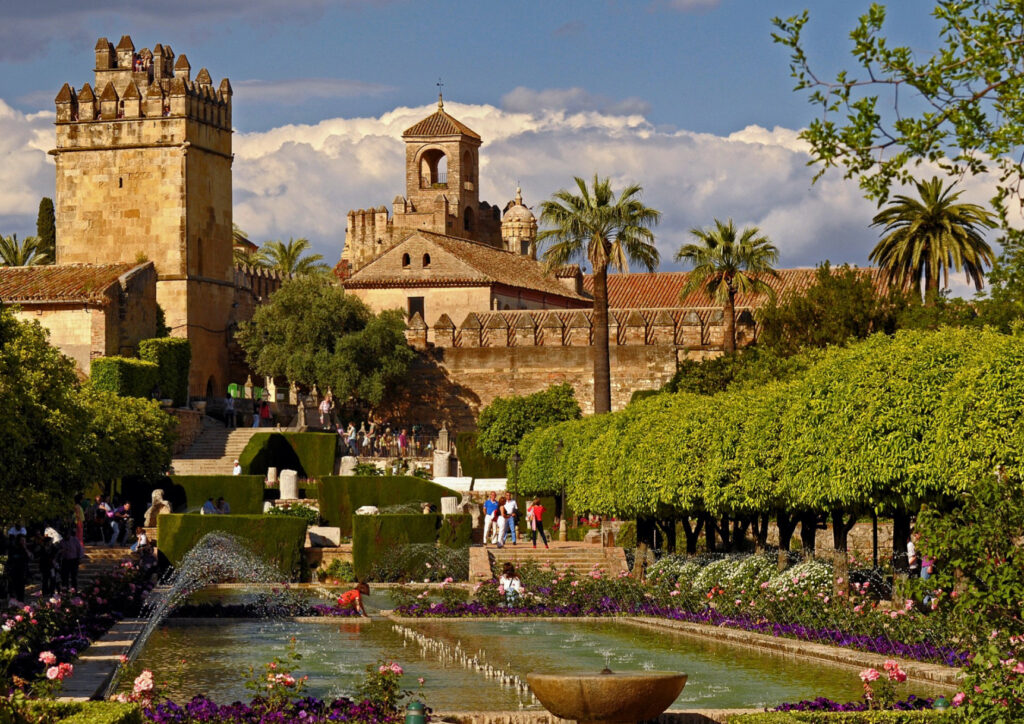
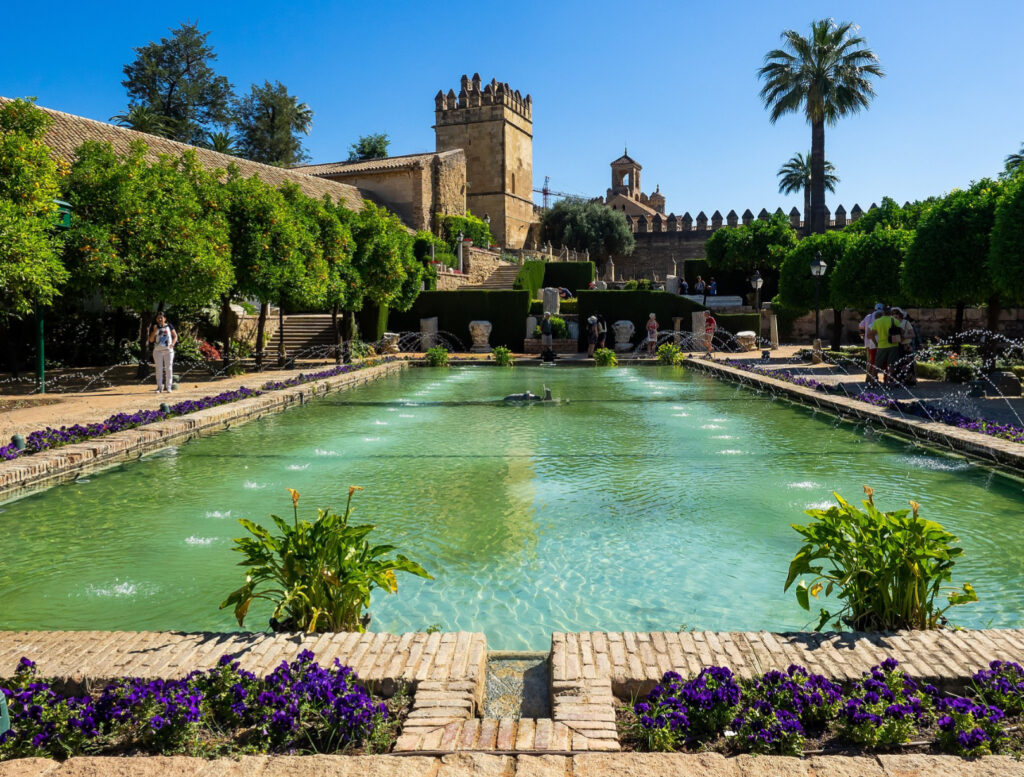
4. Medina Azahara
• Date: 936–976 (built by Caliph Abd al-Rahman III).
• Significance: The remains of a 10th-century palace-city, this archaeological site showcases the grandeur of the Caliphate of Córdoba.
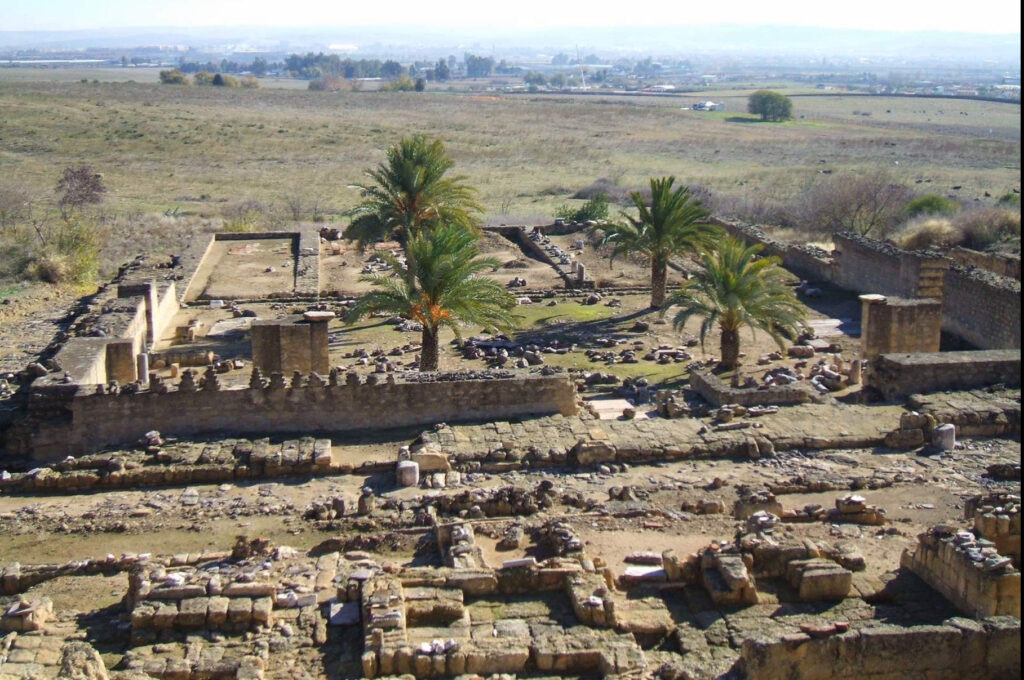
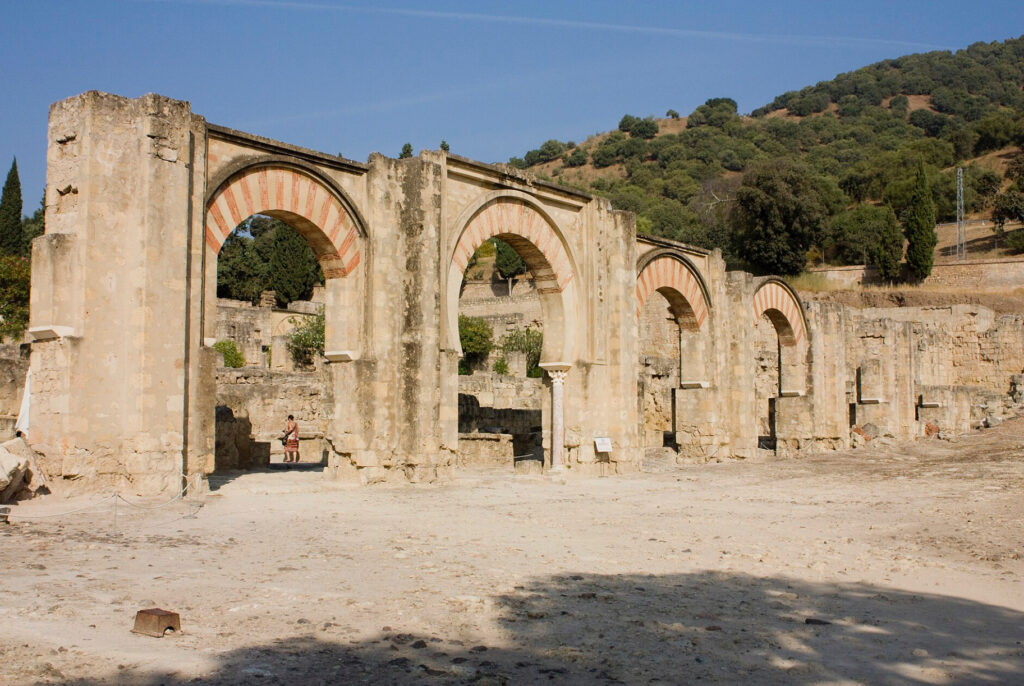
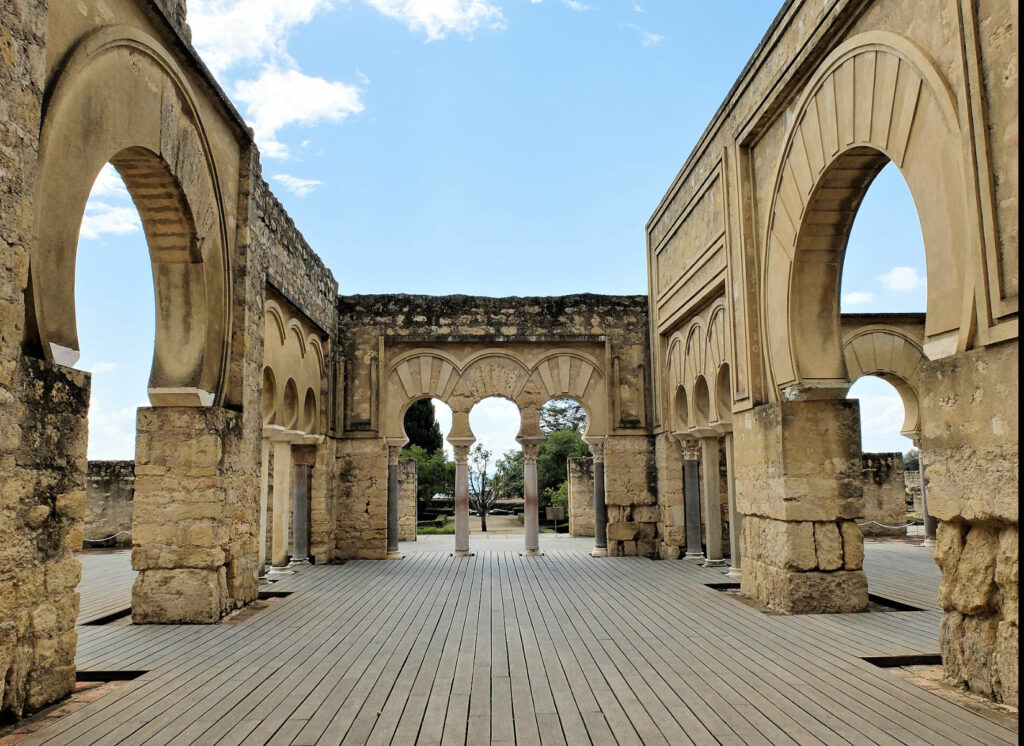
5. Jewish Quarter (La Judería)
• Date: Flourished during the Middle Ages (10th–15th centuries).
• Significance: A maze of narrow streets with whitewashed houses, featuring landmarks like the 14th-century Synagogue and a statue of Maimonides.
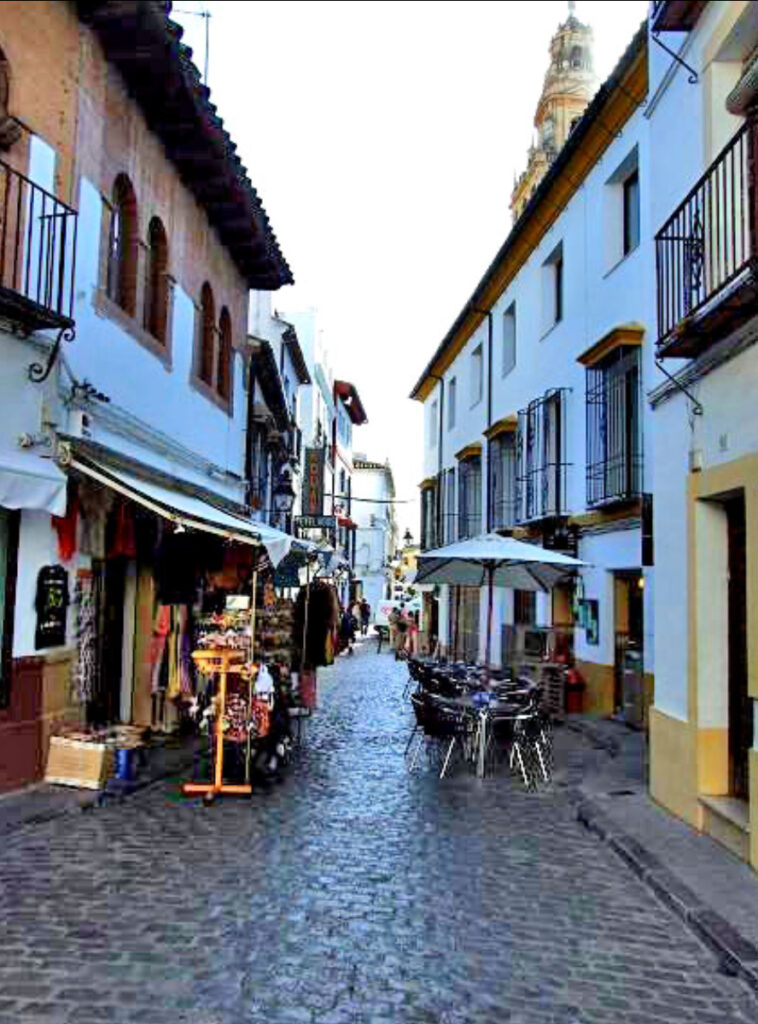
6. Synagogue of Córdoba
• Date: 1315 (Mudejar period).
• Significance: One of only three medieval synagogues in Spain that survived the expulsion of Jews in 1492, featuring intricate plasterwork.
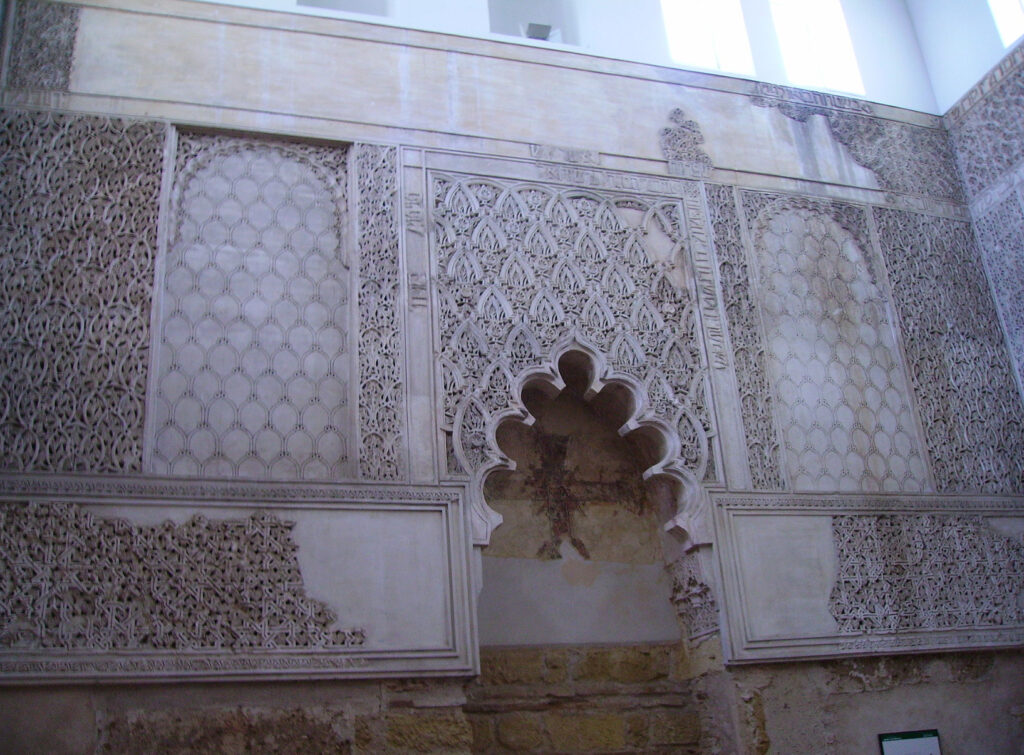
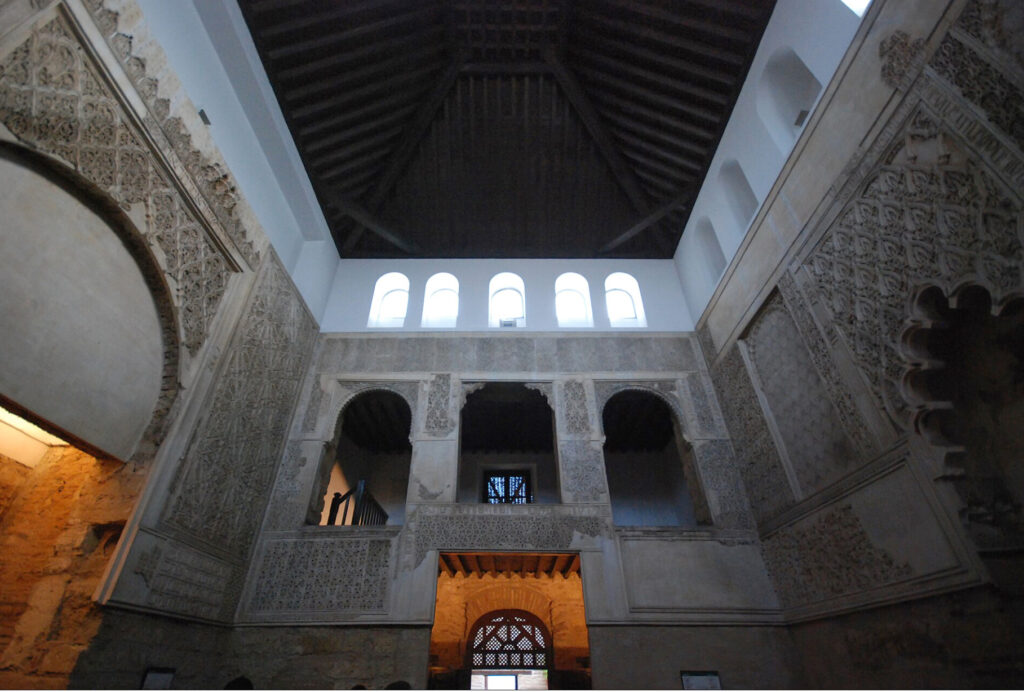
7. Calahorra Tower
• Date: 12th century (Almohad period, later modified).
• Significance: A defensive tower at the southern end of the Roman Bridge, now housing the Museo Vivo de al-Andalus.
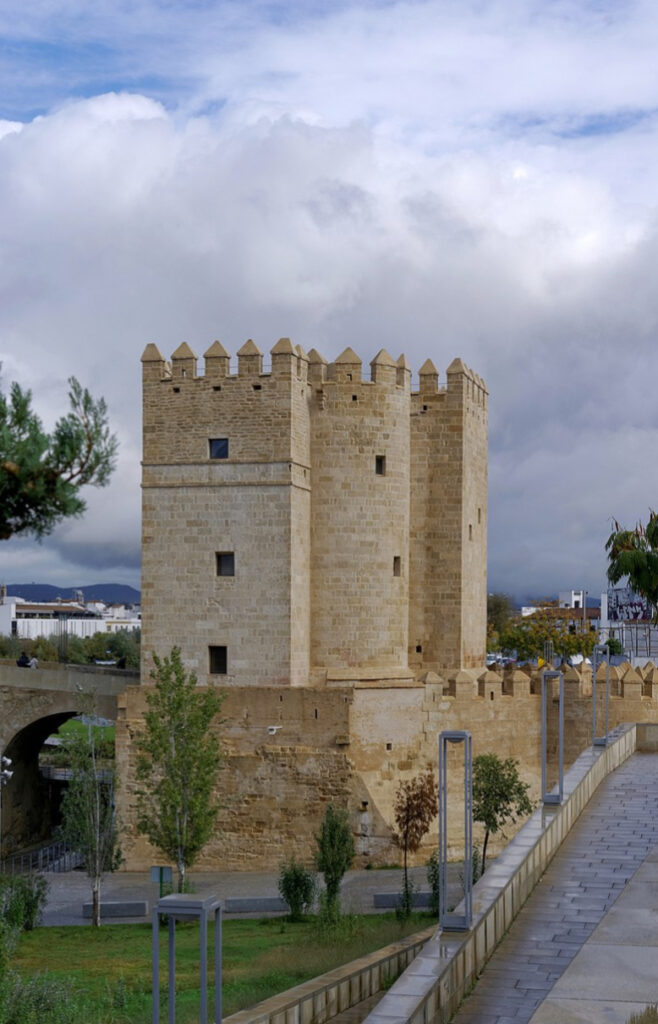
8. Plaza de la Corredera
• Date: 17th century (built by architect Antonio Ramós Valdés).
• Significance: A large rectangular square reminiscent of Madrid’s Plaza Mayor, historically used for public events, markets, and bullfights.
9. Palacio de Viana (Viana Palace)
• Date: 14th century (initial construction, expanded over centuries).
• Significance: A stunning aristocratic residence with 12 patios and gardens showcasing Andalusian courtyard culture.
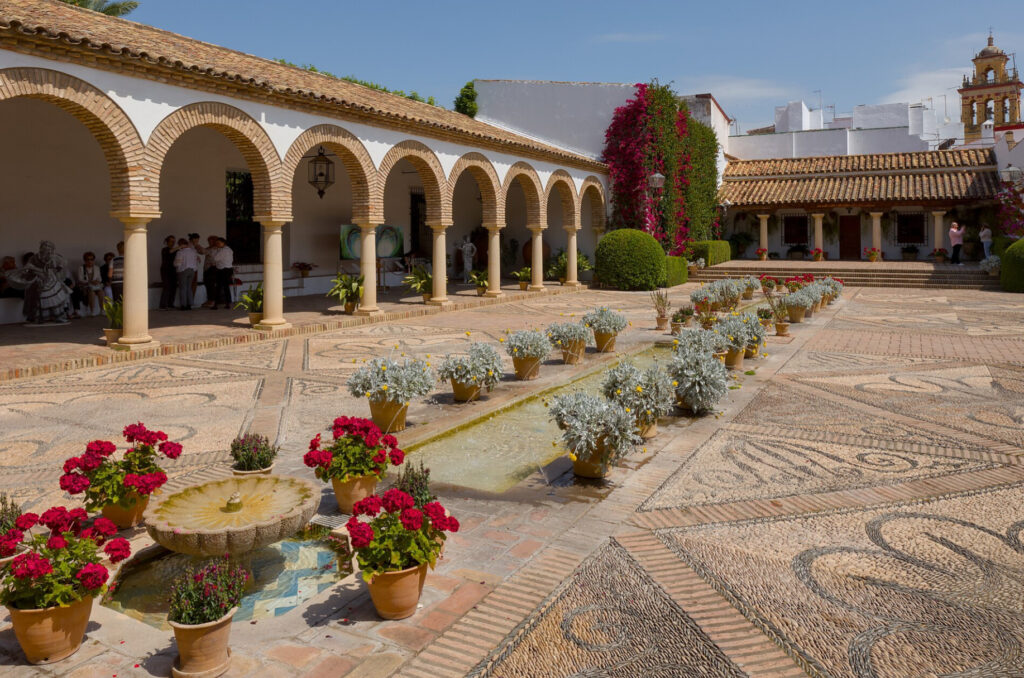
10. Roman Temple of Córdoba
• Date: 1st century CE (Roman period).
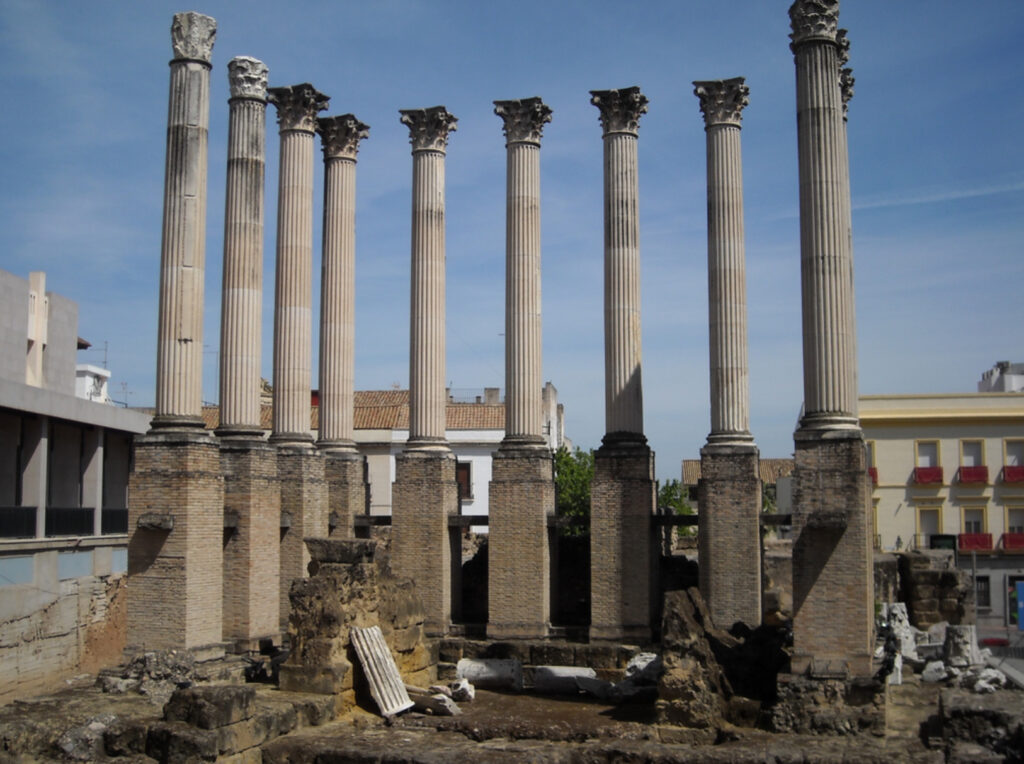
• Significance: The ruins of a Roman temple dedicated to the Imperial cult, located near the city hall.
11. Cristo de los Faroles (Christ of the Lanterns)
• Date: 1794.
• Significance: A famous religious monument in Plaza de Capuchinos, known for its atmospheric lantern-lit setting.
12. San Basilio District (Patios of Córdoba)
• Date: Patios tradition dates back to Roman and Islamic periods.
• Significance: A neighborhood known for its flower-filled courtyards, especially during the Patios Festival in May.
13. Archaeological Museum of Córdoba
• Date: Established in 1867, located in a Renaissance palace.
• Significance: Houses artifacts from Córdoba’s Roman, Islamic, and medieval Christian periods, including a Roman theater.
14. Victoria Market (Mercado de la Victoria)
• Date: 19th century (modern use as a market).
• Significance: A vibrant food market offering local and international cuisine.
15. Gardens of the Alcázar
• Date: 14th century (original construction).
• Significance: Beautifully landscaped gardens with fountains, pools, and orange trees, perfect for a tranquil stroll.
16. Church of San Lorenzo
• Date: 13th century (Gothic-Mudejar style).
• Significance: A well-preserved medieval church with a unique bell tower and rose window.
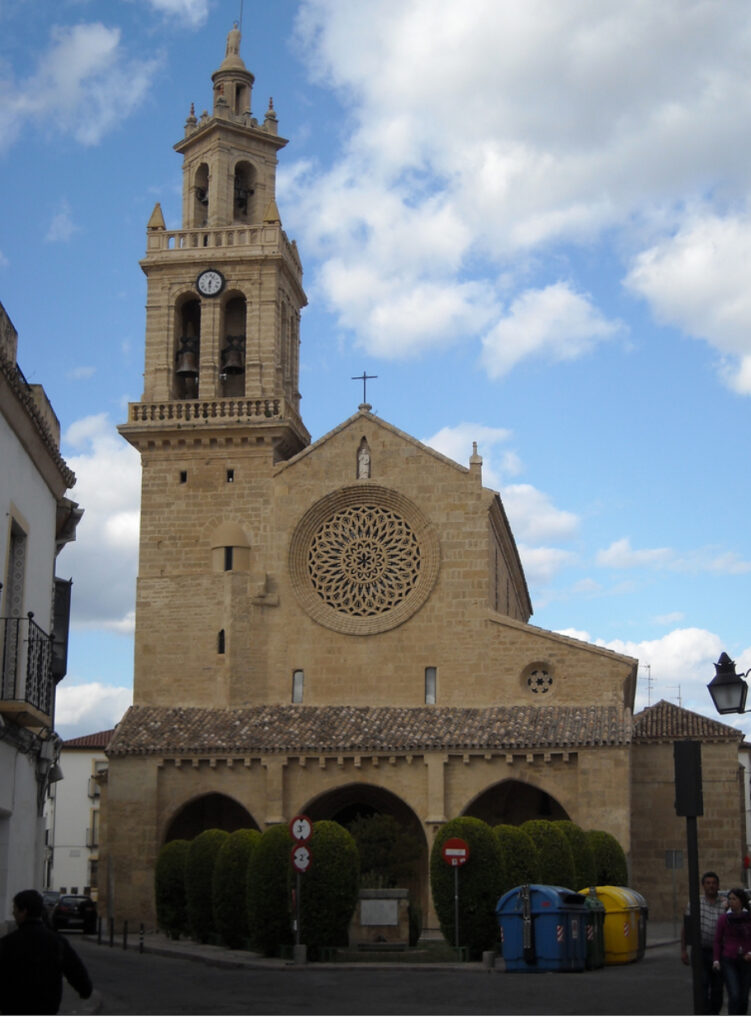
17. Cristo de los Desagravios y Misericordia (Christ of the Atonement and Mercy)
• Date: 18th century.
• Significance: A monumental crucifix that is an important part of Córdoba’s religious processions.
These sites reflect Córdoba’s layered history, from its Roman origins to its Islamic golden age and its Christian transformation, making the city a must-visit for history and culture enthusiasts.
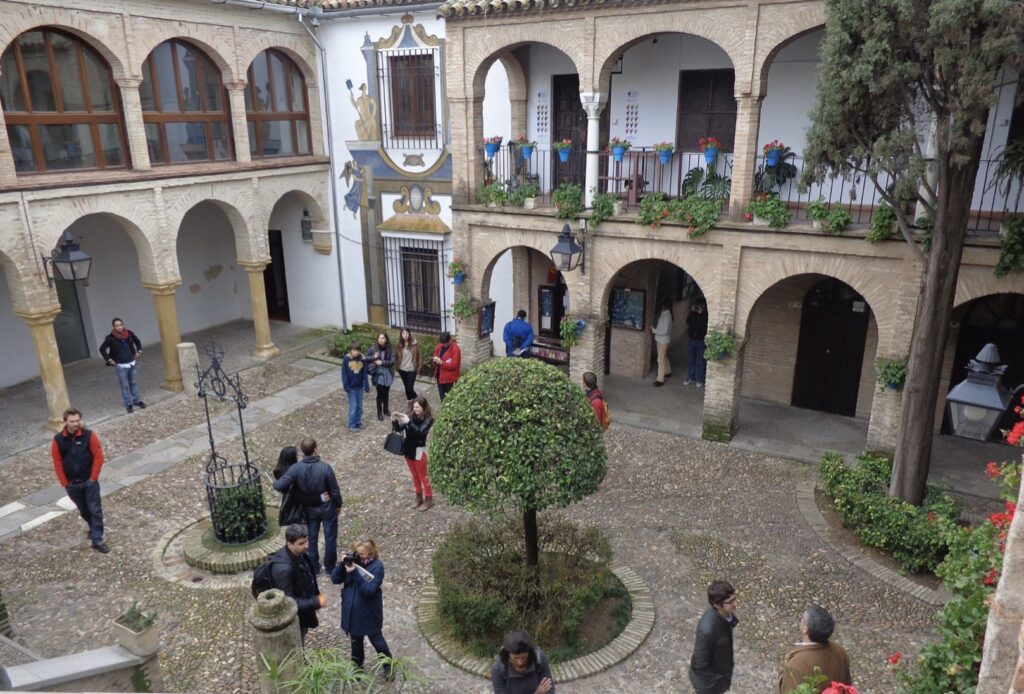
Here’s a thoughtfully crafted two-day itinerary for exploring Córdoba, including major sites, unique overnight accommodation, and opportunities to savor local food specialties.
Day 1: Historic Córdoba
Morning
1. Breakfast at Bar Santos (near the Mezquita-Catedral):
• Try their famous tortilla de patatas (Spanish omelet) to start your day.
2. Mezquita-Catedral:
• Spend the morning marveling at Córdoba’s most iconic landmark. Explore the intricate arches, the mihrab, and the Renaissance nave.
3. Roman Bridge and Calahorra Tower:
• Walk across the Roman Bridge and visit the Calahorra Tower to enjoy panoramic views of the city and learn more about Córdoba’s multicultural past at the museum.
Lunch
• Bodegas Mezquita: A great spot for traditional Cordoban dishes like salmorejo (cold tomato and bread soup) and flamenquín (fried pork roll).
Afternoon
4. Jewish Quarter (La Judería):
• Wander the narrow streets, visit the Synagogue (one of the oldest in Spain), and admire the statue of Maimonides.
5. Alcázar de los Reyes Cristianos:
• Explore the fortress, its historic mosaics, and the beautifully manicured gardens.
Evening
6. Tapas Dinner in Plaza de la Corredera:
• Enjoy a relaxed dinner at Casa Pepe de la Judería, featuring local tapas and a glass of Montilla-Moriles wine.
Overnight Accommodation
• Hospes Palacio del Bailío:
A luxurious boutique hotel set in a 16th-century palace. It features stunning Roman ruins under its glass-floored restaurant, a tranquil courtyard, and a spa for relaxation.
Day 2: Córdoba’s Hidden Gems and Surroundings
Morning
1. Breakfast at the hotel:
• Indulge in a local Andalusian breakfast with fresh orange juice, bread, and olive oil.
2. Medina Azahara (10-minute drive from Córdoba):
• Visit the remains of the 10th-century palace-city of the Caliphate of Córdoba. Book a guided tour to fully appreciate its historical significance.
Lunch
• La Cuchara de San Lorenzo: Located near the San Lorenzo district, this restaurant serves Cordoban delicacies such as rabo de toro (oxtail stew).
Afternoon
3. Palacio de Viana:
• Explore this 14th-century aristocratic palace, famous for its 12 beautifully designed patios showcasing Córdoba’s courtyard tradition.
4. Church of San Lorenzo:
• Visit this Gothic-Mudejar church, a hidden gem of Córdoba’s religious architecture.
Evening
5. Sunset Walk along the Guadalquivir River:
• Enjoy a peaceful stroll or bike ride by the river, taking in the views of the Roman Bridge and Mezquita.
6. Dinner at Noor Restaurant:
• A Michelin-starred restaurant by Chef Paco Morales, offering a modern twist on Andalusian-Moorish cuisine. Advance reservation is essential.
Additional Tips
• Patios of Córdoba: If visiting in May, incorporate time to see the flower-filled patios in the San Basilio District.
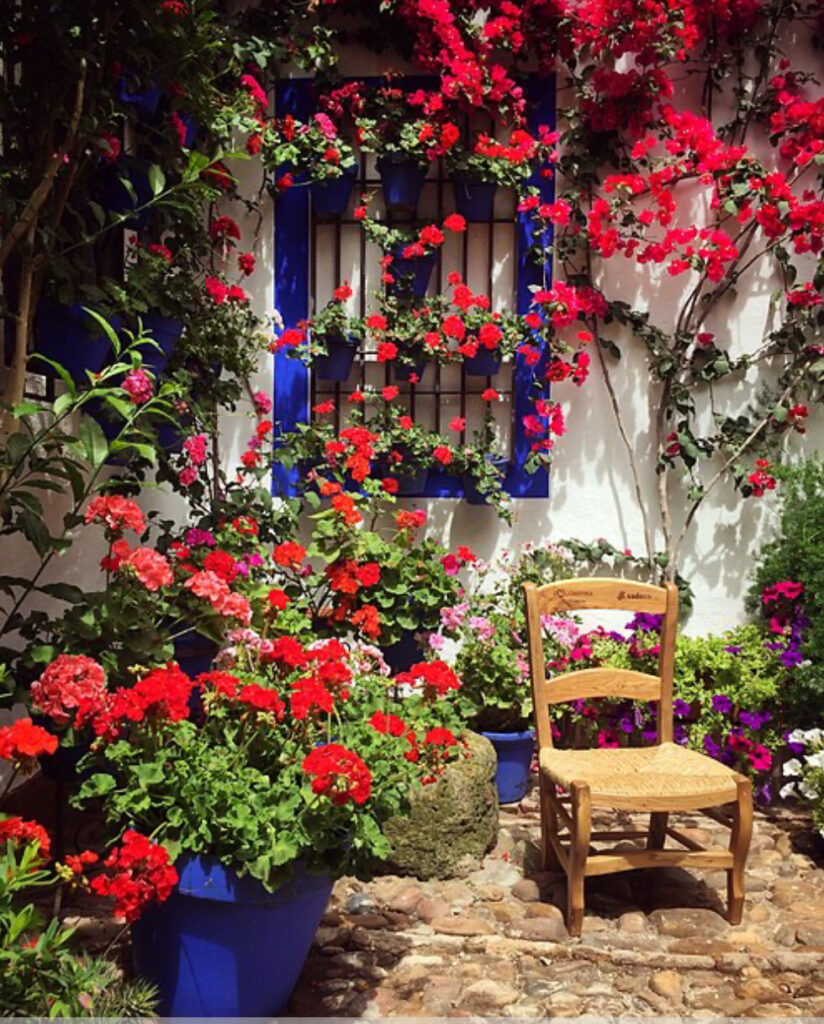
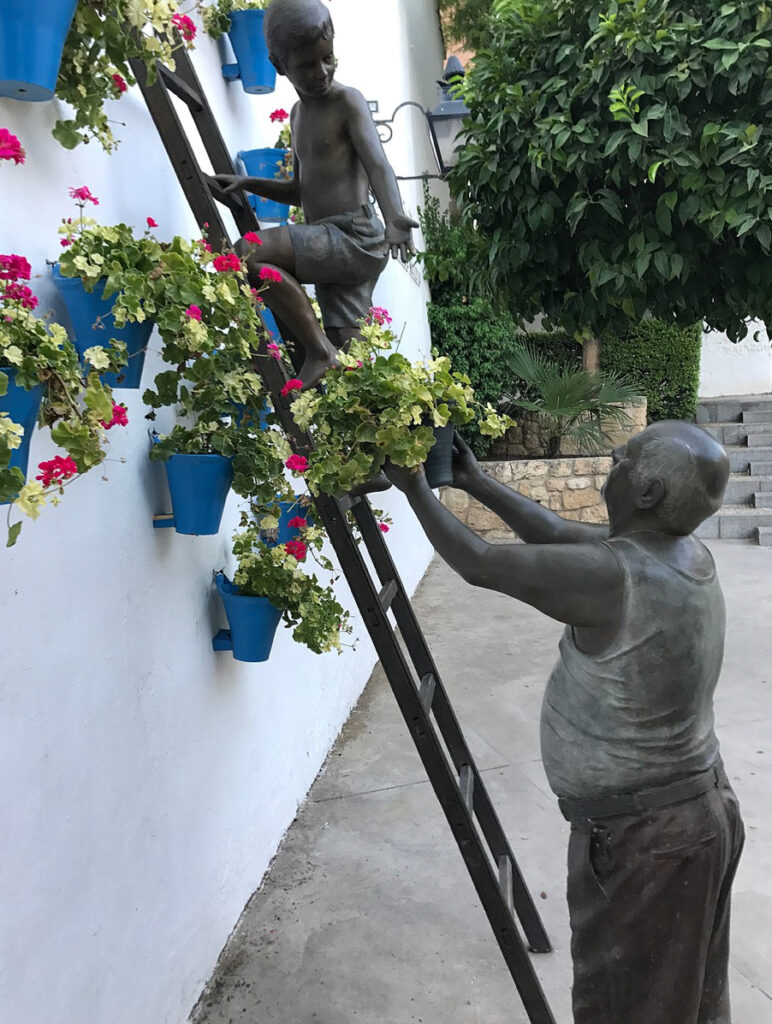
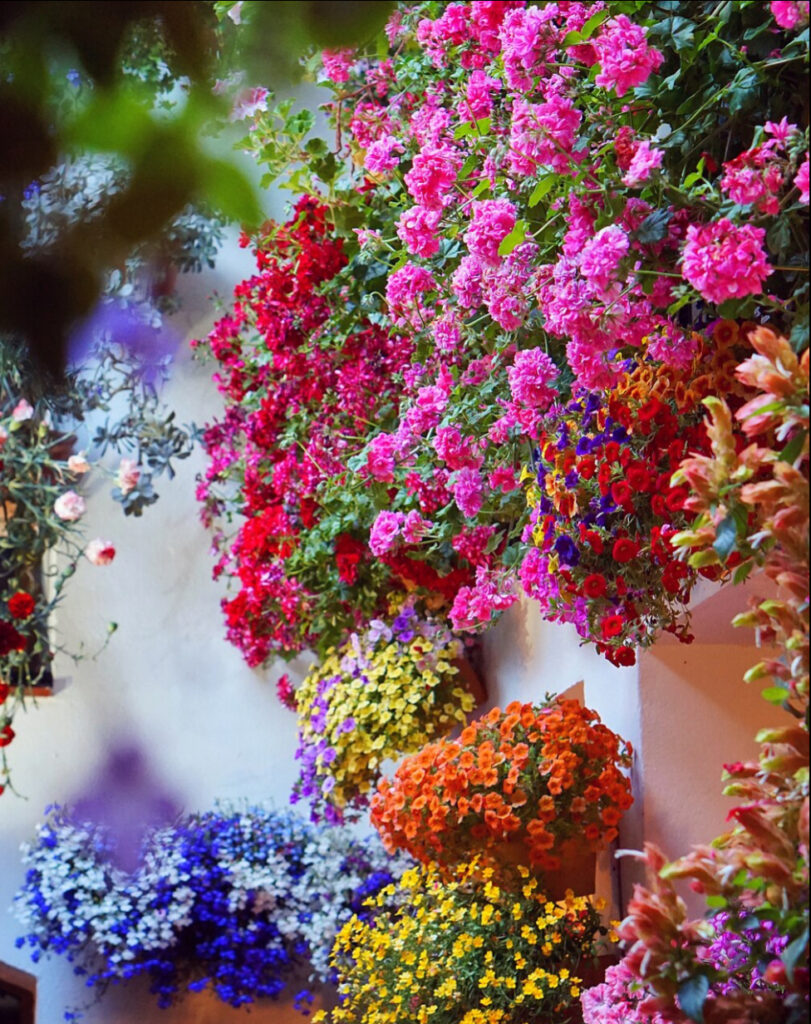
• Transport: Most sites in Córdoba’s historic center are walkable. Use a taxi or bus for Medina Azahara.
This itinerary ensures you experience the essence of Córdoba, combining its historical grandeur, culinary delights, and luxurious comfort.
